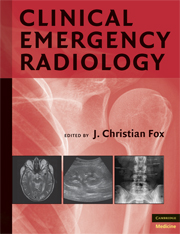Book contents
43 - MRI of the Extremities
from PART IV - MAGNETIC RESONANCE IMAGING
Published online by Cambridge University Press: 07 December 2009
Summary
INDICATIONS
MRI is an excellent imaging modality for visualizing soft tissue and bony pathology. Although the majority of hospitals now have MRI scanners, they are still not widely available on call. MRI studies should only be requested emergently if the required diagnostic information cannot be adequately obtained from other imaging studies such as radiographs, CT, or ultrasound. However, nonurgent MRI studies can be extremely helpful for the diagnostic workup of patients presenting to the ED, if the patient will not suffer any detrimental effects from the delay in imaging.
It is vital to provide the relevant clinical history and diagnostic information with any request for imaging to help determine the most appropriate radiological study. Documentation of a patient's presenting symptoms or precipitating event on the request form is important because a request that states “to simply rule out [a particular diagnosis]” may cause insurance companies to deny subsequent reimbursement. It is helpful to indicate which investigations the patient has had prior to imaging and whether the results of these tests were abnormal.
In females of reproductive age, it is important to determine whether the patient is pregnant prior to requesting a study because this may alter the choice of examination. During pregnancy, ultrasound or MRI are preferable to CT or multiple radiographs, which involve patient irradiation, unless the risk to the mother from undiagnosed injuries outweighs the risk to the fetus from irradiation.
Keywords
- Type
- Chapter
- Information
- Clinical Emergency Radiology , pp. 586 - 632Publisher: Cambridge University PressPrint publication year: 2008

